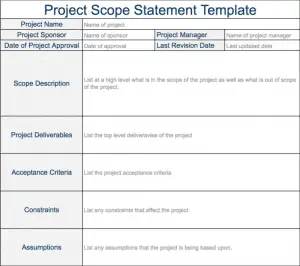Although PRINCE2 is aimed a Project Managers, I believe it’s important for Program Managers to have a good foundation in project management, as understanding project management processes and tools will stand you in good stead as a Program Manager.
This article won’t give you a deep understanding of PRINCE2, but it will give you a handle on all the elements which go together to make up PRINCE2. So, without further delay, here is an overview of PRINCE2 to get you up to speed quickly:
PRINCE2 stands for Projects IN a Controlled Environment
There are two key concepts of Prince2
- A project has a finite start and end date
- Projects need to be managed and controlled through all stages in order to be successful
Prince2 is a process based approach to project management, and there are 8 processes in Prince2
- Directing a Project: This process is aimed at the project board. They manage by exception, monitor via reports, and through a number of decision points e.g. managing stage boundaries.
- Starting up a Project: This is the first PRINCE2 process, where you create the team, and create the initiation stage plan.
- Initiating a Project: Here we get the business case together, encourage project board to take ownership, and put plans together for next stage.
- Managing Stage Boundaries: The purpose of this stage is to assure the project board that deliverables from stage have been delivered, assess continuing viability of project, and approve the start of the next stage, if appropriate.
- Controlling a Stage: In this stage we authorise work to be done. Monitor progress. Review situation. Report. Take corrective action if necessary.
- Managing Product Delivery: Make sure work on products is authorised. Ensure work is done and conforms to requirements. Assess work progress and forecasts regularly
- Closing a Project: In this stage we prepare the End Project Report. Notify the organisation you will disband the project team. Review fulfilment of PID. Perform the lessons learned exercise.
- Planning: This process is used in many processes. Steps: plan products needed then plan the sequencing and resources.
In addition to the PRINCE2 processes, there are 8 components (or principles) in Prince2:
- Business Case
- Organisation: Prince2 defines a structured management team (3 levels) and their roles and responsibilities.
- Plans: Prince2 uses a product based planning technique.
- Controls: These ensure decision makers get the right information at the right time e.g. use of stages and exception reports
- Management of Risk
- Quality in a Project Environment: Prince2 establishes the customer’s quality requirements as early as possible.
- Configuration Management: Prince2 ensures that a product’s key assets – its products, can be identified tracked and protected. Prince2 doesn’t tell you which method to use.
- Change Control: Prince2 ensures all changes are accepted at an appropriate level – stopping costs getting out of control.
There are three optional techniques in Prince2:
- Product Based Planning: Process: Identify what products are needed -> Determine content of each product -> determine sequencing -> Define quality criteria each product must meet
- Change Control
- Quality Review
It’s easily possible for you to spend a week understanding the detail of all this, but I hope you now have a rough and ready understanding of PRINCE2. If you’d like further introductory reading on PRINCE 2, a good place to start is PRINCE 2: A Practical Handbook, by Colin Bentley.










